- Business Lists ›
- Top Brands ›
- Top 10 Iron and Steel Companies in the World 2016
Top 10 Iron and Steel Companies in the World 2016
The Iron and Steel industry has grown over the decades to be largest sectors and businesses in the world. The top iron & steel companies are Arcelor Mittal, VALE, Nippon Steel & Sumitomo Metal, POSCO & JFE Steel along with brands like Baosteel, TATA Steel, Hyundai Steel, Kobe Steel and NUCOR. It continues to contribute to the major industries like Manufacturing, Construction, Automobiles, Defense and Transportation etc. In fact we can see Iron and Steel products in every aspect of our daily lives. To remind once, Steel is an alloy of Iron and other elements like Carbon etc. The wide application of steel products comes from their tensile strength and low costs. Consumption of steel products is largely dependent on the growth of the national economy which means the steel industry is cyclical in nature. The consumption of steel in the world is measured in crude steel production terms as crude steel would later be converted to various forms of steel products. Here is the list of the top 10 Iron and Steel Companies in the world 2016.
10. NUCOR
The U.S Steel Company Nucor was founded by Samuel Siegel and Ransom E Olds in the year 1905 and is headquartered in Charlotte, North Carolina.
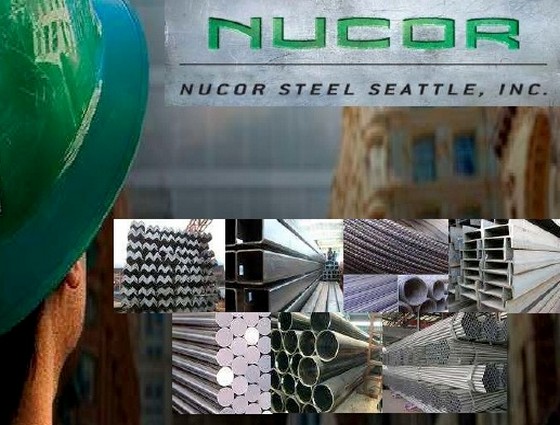
Image: company website
Main operations of the company through three segments: Steel Products, Steel Mills and Raw Materials. The Steel Products segment produces the steel fasteners, steel joists, metal building materials and systems, fabricated concrete reinforcing steel, light gauged steel framing and grating, wire & wire mesh products.
The Steel Mills segment produces and distributes the structural steel, plate steel, sheet steel and bar steel Mills. The Raw Materials segment produces brokers’ ferrous and nonferrous metals and direct reduced iron among many. Nucor is the largest recycler of any raw material in North America, having the recycling ability of 1 ton of steel every 2 seconds.
In 2015, Nucor earned $358 million, compared with consolidated net income of $714 million in 2014. Total net sales reduced by nearly 22% to $16.4 billion compared with $21 billion in 2014. Total tons shipped to outside Customers reduced. The average scrap and scrap substitute cost used saw a decrease of 29% from $381 to $270 per ton. Despite the poor market scenario, many business groups saw high performance over the previous year, which includes bar and structural steel divisions and the steel products group. Unfortunately, significant market headwinds resulted in lower performance for our sheet and plate divisions compared to 2014.
Nucor has also joined other U.S. steel companies in filing trade cases for several flat-rolled products, including corrosion-resistant, hot-rolled and cold-rolled steel. The International Trade Commission has made preliminary determinations of injury in all three cases, allowing the investigations to proceed. Nucor Corporation continues to assess the market conditions in other product areas and pursue cases to benefit itself and the steel industry.
PARAMETERS:
Total Assets: $14.25 billion
Net Sales: $16.44 billion
Net Profits: $496.08 million
9. Kobe Steel (KOBELCO)
Kobe Steel is the Japanese major steel company founded in 1905 and headquartered in Kobe city, Japan; Kobe Steel engages in the manufacturing, producing and selling of iron and steel products.
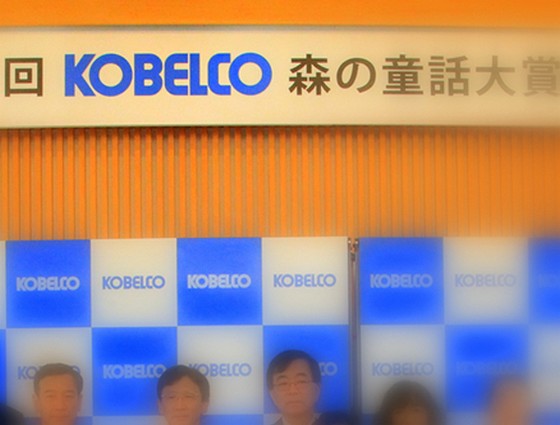
Image: company website
Its location in a major pot city in japan was useful in exporting and importing iron ore and coal. The Iron & Steel Business segment provides titanium and titanium alloys, steel wire rods and bars, steel sheets, steel billets, steel castings & forgings, slag products, foundry pig iron, stainless steel tube and few other specialty steel products. Other business segments of Kobe Steel consist of wholesale power supply, construction machinery, Electrical machinery, real estate, and electronic materials etc.
Total assets for Kobe Steel at the end of FY15 decreased by 39 billion yen, compared with the end of FY14, to 2261 billion yen due to the decrease in securities and the increase in allowance for doubtful accounts, although cash and deposits increased. Due to the posting of net loss attributable to owners of the parent and other factors, net assets at the end of FY15 decreased 106 billion yen, compared with the end of FY14, to 745 billion yen. As a result, the net worth ratio at the end of FY15 was 30.7 percent, a decrease of 3.2 percentage compared with the end of FY14.
Net cash flows from operating activities amounted to 98 billion yen after posting loss before income taxes and non-controlling interests of nearly 11 billion yen and depreciation of 95 billion Yen. Net cash flows from investing activities amounted to (105 billion yen) due to the purchase of fixed assets and other items. Net cash flows from financing activities amounted to 94 billion yen due to the increase of borrowings and other items. At the end of fiscal year 2015, other debt, that includes IPP project financing, increased 112 billion yen, compared with the end of fiscal year 2014, to 789 billion yen.
PARAMETERS:
Total Assets: $20.09 billion
Net Sales: $16.2 billion
Net Profits/Losses: - $299.29 million
8. Hyundai Steel Company
Korean Steel major Hyundai Steel Company was founded in 1953 in Incheon and Seoul, South Korea.
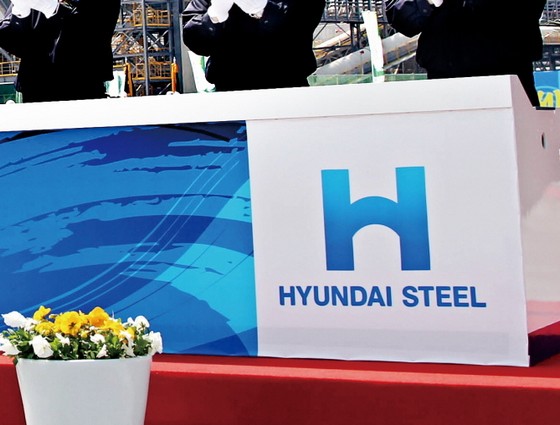
Image: company website
It was the first steel maker in Korea and is the member of Hyundai KIA Motor Group Company. The major operations of Hyundai Steel Company include Special Steel business, Electric Arc furnace business, and Blast furnace business, and it’s a globally recognized brand name. Korea’s economic development and Steel business development can be highly attributed to technological development of electric arc furnaces by Hyundai Steel. With the 2010, completion of an integrated steel mill, the first ever constructed by a private company, Hyundai Steel has grown into a global steel maker with a product portfolio that is second to no other company in the world.
As part of the Hyundai Motor Group, Hyundai Steel Company is playing a crucial role in resource recycling network of the group by making automobiles using molten iron. In the process, Iron that is melted in a blast furnace is transformed into moulds of cars. Hyundai steel manufacturing is widely known for its quality and manufacturing process used.
Hampered by the recent fall in oil prices, a recent rise in interest rates in US, and the Abenomics policy in Japan, the global economic crisis exists and expected to continue. In response to the current economic climate, businesses must strengthen their operations and competitive abilities to focus on their key competences more keenly now than ever before. Based on the company’s strengths in blast and electric arc furnaces, Hyundai Steel has the competitiveness and distinct competence to handle rapidly changing global economics in a flexible manner.
FY15 was quite challenging for Hyundai Steel group, given the slowdown of world’s automobile industry and Korean economy. Based on innovative business initiatives such as the construction of a round bar production plant, the company has developed several marketing strategies in line with the changes in the global steel market while reinforcing its status both in Korea and in the world market.
PARAMETERS:
Total Assets: $25.49 billion
Net Sales: $12.49 billion
Net Profits: $907.43 million
7. TATA Steel
Tata Steel was incorporated in 1907 in Jamshedpur by JRD TATA, as Asia's first integrated private-sector steel company.
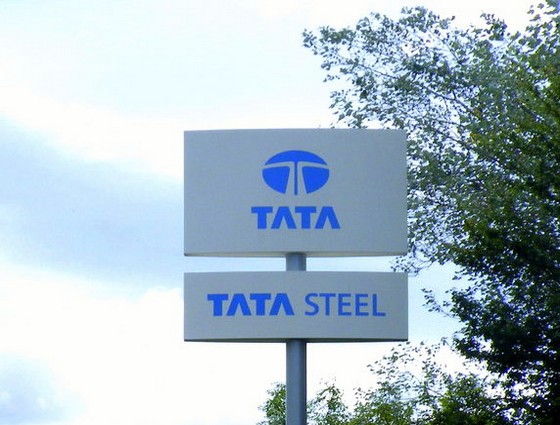
Image: geograph
Currently it is headquartered in Mumbai, India, and its largest plant is located in Jamshedpur, Jharkhand with a capacity of 9.7MTPA. TATA Steel has its manufacturing operations present in 26 countries including India, the UK, Netherlands, Thailand, Singapore, China and Australia. Total annual crude steel capacity of TATA Steel amounts to nearly 29MTPA. In 2007 Tata Steel had acquired the UK-based steel major Corus for nearly $13 billion which was the largest international acquisition by an Indian company. With its investments in Corus (Division in Europe), Millennium Steel (Division in Thailand) and NatSteel Holdings (Division in Singapore), Tata Steel has become one of the largest global steel companies.
The company manufactures a wide range of products and is present across 50 countries. It produces steel through the blast furnace/BOF route and has highly efficient production processes. It has modern CR mills to produce CR and galvanized products. Its main offerings are value-added steel products, such as HR strips, coils, sheets, plates, bars, rods and structurals. It also manufactures and sells semis, viz. billets, blooms and slabs.
During the FY16, the Company's Indian operations were negatively impacted by the regulatory issues and uncertainties in the mining sector which resulted in lower than expected performance. For the first time in the history of TATA Steel, many of its critical mines remained closed for some period, causing high stress on the company’s operations and utilizations. This has led to disruptions in supply and production and impacted the company’s cost structure.
Despite heavy competition and greater price fluctuations globally, the Tata Steel Group achieved growth in both production and sales. This was mainly due to various initiatives taken, that built competitiveness, improved efficiencies and enabled market differentiation. The company was able to manage its deliveries across the Group despite depressed steel markets. The company successfully refinanced US$ 7 billion ahead of time to help in maintaining low risk in the Balance Sheet. Note: TATA Steel had closed their operations in UK in April 2016 and in final deals to sell its assets so we have not considered those assets as part of the total assets.
PARAMETERS:
Total Assets: $24.11 billion
Net Sales: $28.02 billion
Net Profits/Losses: -$801.22 million
6. Baoshan Iron & Steel (Baosteel)
Baoshan Iron & Steel Company commonly known as Baosteel was founded on February 3, 2000 in Shanghai, China.
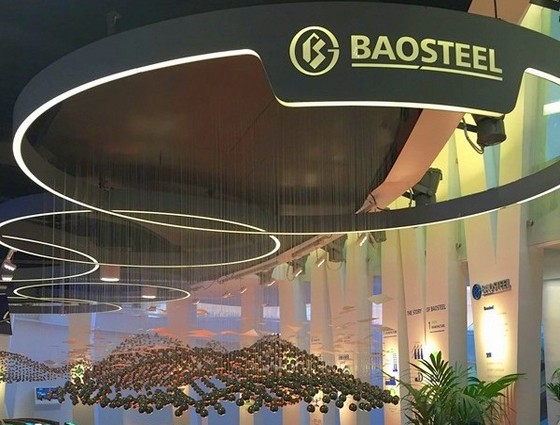
Image: company website
It is a state owned Iron and Steel company and part of the Shanghai Baosteel group corporation, and one of the largest companies in China. It operates majorly in three reported segments: iron & steel manufacturing, sales of iron & steel products and other specialized businesses. The company’s Iron and steel manufacturing segment manages all units of iron and steel production. The Sale division primarily looks after the trading of iron and steel. Other specialized segments offers finance, chemical and information services. These segments are managed through the company's subsidiaries.
In the past three years, Baosteel’s primary operations in iron and steel helped in effectively addressing the severe market challenges and staying ahead of the competitors and in the domestic industry by focusing on the areas like improvement in adjustment of product mix, industrial layout, and optimization of cost performance, innovation in technology and overall competitiveness. The company also made collaboration with its steel sector, the integrated and diversified sectors of Baosteel have continuously made the transformation from internal units to market-oriented sectors, and was able to make solid progress in their industrial development. The Company was able to initiate its strategic transformation from steel production to the materials, from manufacturing to services and from China to the world. The company has also launched the research and development of new materials such as aluminum, magnesium, titanium products and energy storage materials, which helped in optimizing deployment of the processing and distribution of service network using its technology, and begun to gradually grow into a supplier of integrated material solutions specializing in iron and steel.
In face of negative operating environment, the Company has continuously improved the effective coordination of Purchase & sale, strong customer service and technological innovation, optimized producing & marketing mode, strongly enhanced cost reduction and performance improvement, helped in facilitating development in two wing fields to make sure operating objectives of 1st quarter are accomplished up to the requirements. In the reporting period, the Company had produced 5.4 million tons of iron, 5.6 million tons of steel and 5.2 million tons of steel products, and achieved a total consolidated profit of RMB 2.2 billion.
PARAMETERS:
Total Assets: $37.61 billion
Net Sales: $26.71 billion
Net Profits: $1056.17 million
5. JFE Steel Group
The Japanese steel major JFE Holdings, Inc. was formed in 2002 and is headquartered in Tokyo city, Japan.
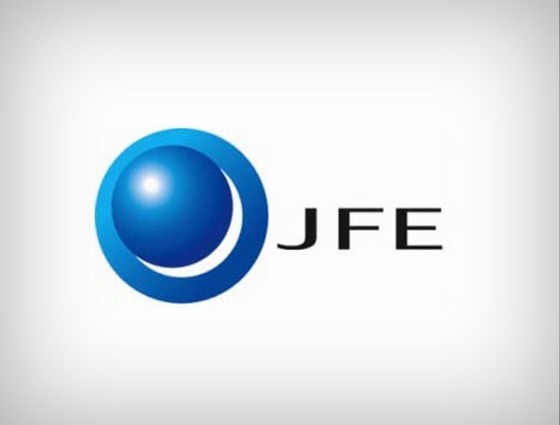
Image: company website
The company was formed by merging the companies NKK and Kawasaki Steel Corporation, and before the merger, NKK Corporation and Kawasaki Steel were the second and third largest steelmakers in Japan respectively. Currently JFE Steel Corporation is part of the JFE Holdings group. JFE's primary business is its steel production along with its involvement in other businesses like engineering, metal products in ship building and real estate development etc.
JFE Steel Corporation production centers are mainly concentrated in three regions: two of them being the large coastal steelworks in eastern and western Japan, and the third one is Chita Works, which specializes in producing steel pipes and steel tubes. All of these centers use advanced technologies to produce efficient and high-quality steel products. The company also has technical research centers at all the regions for the development and application of advanced technologies in making steel in the world.
The JFE Group has made consistent efforts to increase its profits. Efforts in Japan included improving its manufacturing base and using its cutting edge technology to develop new products and minimize costs. Overseas, the JFE Group made greater efforts to expand its businesses based on its long-term strategy. Despite these efforts, the persistent oversupply of steel resulted in the deterioration of global steel industry conditions, resulting in decreases both in operating income and in net profits compared to previous year. As a result, if we look on a consolidated basis, net sales has come down to 3432 billion yen. Operating profits have fallen to 90 billion yen and normal profits have fallen to 64 billion yen. An economic profit of 10 billion yen was recorded for FY16. Profit before taxes came to nearly 75 billion yen and profit attributable to shareholders and owners of the parent company was nearly 34 billion yen.
By segment, the production of crude steel in the steel business had decreased to nearly 30 million tons in the face of domestic inventory adjustment. The lower prices in the industry and excessive supply from china led to the drop in Net sales to 2445 billion yen. Although the business made greater efforts to improve profitability, Net income decreased to nearly 28 billion yen due to a decrease in sales volume and unfavorable export conditions.
PARAMETERS:
Total Assets: $37.63 billion
Net Sales: $30.49 billion
Net Profits: $334.57 million
4. POSCO
The Korean major POSCO Corporation was found in 1968 in Pohang, South Korea.
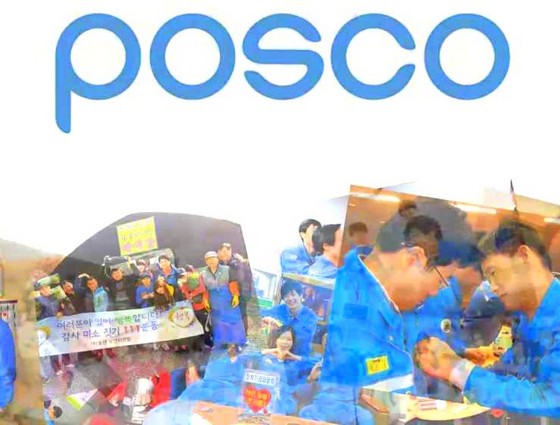
Image: company website
POSCO was renamed after Pohang Iron and Steel Company, which was a famous multinational steel maker. Back then in 1986, the CEO of POSCO founded the Pohang University of Science & Technology (POSTECH University) as first science and technology research oriented university in Korea. He had a mission to educate young Koreans who can contribute to national prosperity through the advancement in science and technology, as he believed that “One can import coal and machines, but one cannot import talent”.
The largest single steel mill in the world, Pohang Works is owned by POSCO which produces hot rolled, cold rolled and stainless steel products. There are nearly 18000 employees at the end of the year 2015 working at POSCO.
With the recession of the global economy that continued in 2015, POSCO’s sales based on separate financial statement decreased by 4.3 percent at KRW 29,219 billion while operating profit increased by more than 6 percent at KRW 2,350 billion. The company’s Net profit margin reached 8 percent on a standalone basis. Though the structural recovery of the steel economy may not be in the near future, we continue our efforts to improve our financial structure by enhancing our fundamental competitiveness through expanding the sales of high value products and selling non-core assets. A global provider of steel information held the 29th Steel Success Strategies conference in 2015 where POSCO was named the most competitive among the 36 steelmakers in the world for five consecutive years based on its quality and production standards.
PARAMETERS:
Total Assets: $45.51 billion
Net Sales: $50.82 billion
Net Profits/Losses: - $24.09 million
3. Nippon Steel & Sumitomo Metal Corporation (NSSMC)
Nippon Steel & Sumitomo Metal Corporation is a major Japanese steelmaker founded in 2012 with the merger of other Japanese steel makers Nippon Steel and Sumitomo Metal.
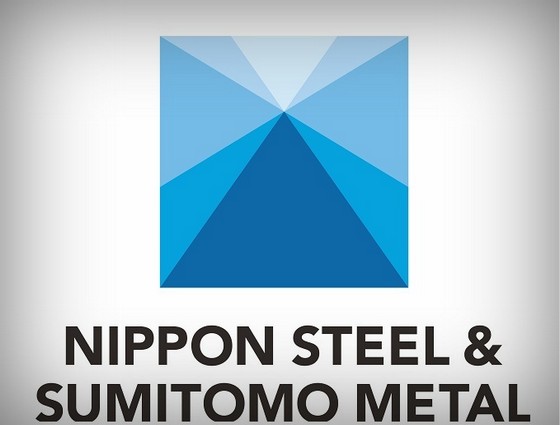
Image: company website
Before the merger Nippon Steel was a prominent domestic steel player in Japan which was formed in 1970 with a merger between Fuji Iron and Steel and Yawata Iron and Steel. The company’s overall businesses can be categorized into five business segments: steelmaking & steel fabrication, Engineering & Construction, Chemicals, New materials (nonferrous), and System solutions. The Nippon Steel & Sumitomo Metal Corporation Group is comprised of the parent company Nippon Steel & Sumitomo Metal Corporation, 339 consolidated subsidiaries, and 103 other affiliates. The steel business in the world has seen its lowest prices and profits during the FY 2016 where the company has made steady progress in implementing the strategies of the Medium-Term Management Plan to Fiscal 2017, which was launched at the end of March 2015. The plan included enhancing and modernizing the efficiencies of the domestic mother mills, advancing global strategies, realizing world-leading cost competitiveness, augmenting technological superiority, and strengthening the subsidiaries and affiliates in the steel business.
NSSMC’s consolidated results for FY 2015 include ¥4,907 billion in net sales, ¥168 billion in operating income, and ¥201 billion in ordinary income. Decline in shipment volume and a decrease in steel material prices has substantially affected the results, which can also be attributed to lower profit by group companies and other factors. As a result, retained profit attributable to owners of parent company amounted to nearly ¥145 billion.
Consolidated total assets for the company at the end of fiscal 2015 reported was ¥6,425 billion, showing a decrease of ¥733 billion from ¥7,158 billion at the end of FY 2014. The main reasons were decreases in accounts and cash receivables of ¥92 billion, material inventories of ¥143 billion, investments in financial securities of ¥176 billion, shares of subsidiaries and affiliates of nearly ¥100 billion, and net defined assets of ¥65 billion.
PARAMETERS:
Total Assets: $56.24 billion
Net Sales: $41.14 billion
Net Profits: $1778.83 million
2. VALE
VALE is the largest South American steelmaker. It was founded in 1942 and headquartered in Rio de Janeiro, Brazil.
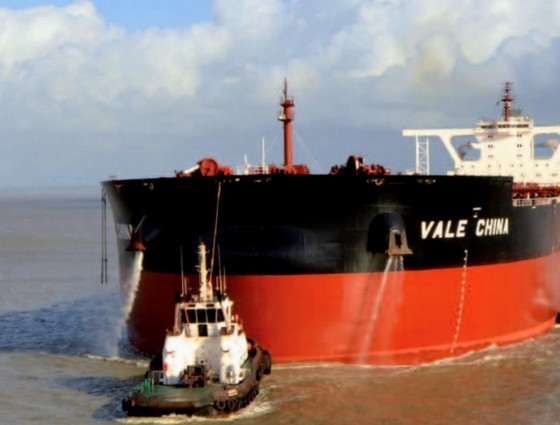
Image: company website
It is widely known for its logistics operations in metals and mining activities in Brazil, and is a globally recognized brand in the iron and steel industry worldwide. Vale SA is engaged in the production and export of iron ore, Iron pellets, Ferro alloys and manganese products which are the raw materials needed in making steel. The services provided by the company can be primarily divided into four segments: Bulk Material, Basic metals, Fertilizers, and the Logistic services, Vale is known for its prudent investments in joint ventures and associate with other business entities. It also operates through its subsidiaries and affiliate entities which are situated in Brazil, Chile, Singapore, Australia, and the United States etc.
VALE is one of the largest metal products & mining companies in the world, based on its market capitalization. It is also the world’s largest producer of Nickel, iron ore and iron ore pellets. Other products of the company include manganese ore, metallurgical & thermal coal, ferroalloys, copper, platinum and other Noble metals, potash, phosphates, cobalt, and other fertilizer nutrients. The company is operating in mineral explorations in 6 countries around the globe. The company operates using large logistics systems in its business locations, which are also used in railroads, maritime terminals & ports, which help in integrating with their mining operations. In addition, the company has a mix of floating transfer stations, maritime freight assets, and distribution centers setup to support iron ore distribution worldwide. Directly and through affiliates and joint ventures, it also have investments in energy and steel businesses.
In 2015, the company has launched a new blended product in iron ore fines to better meet the market needs. The new product has become popular for its ease of transportation and substitutability. This product reduces the time to reach Asian markets and increases the company’s distribution capability by using smaller vessels.
PARAMETERS:
Total Assets: $88.49 billion
Net Sales: $25.61 billion
Net Profits/Losses: - $12620 million
1. Arcelor Mittal
The global steel giant Arcelor Mittal is a multinational and largest steel manufacturing corporation in the world headquartered in Luxembourg.
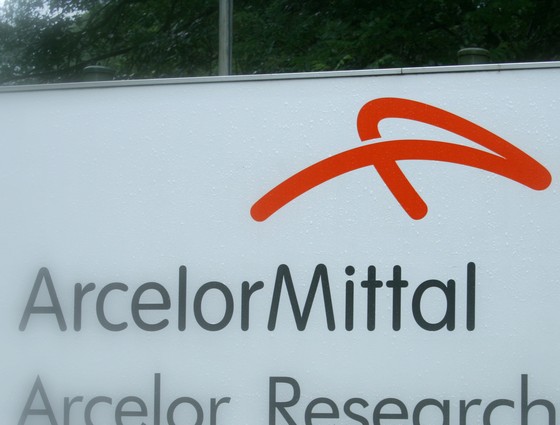
Image: Wikimedia
The company was incorporated in 2006 from the takeover of Arcelor by Mittal Steel, which was an Indian owned multinational steel maker. The acquisition price was around $33 billion in total which was the largest acquisition in the steel industry till then, and has since then become one of the leaders in the industry. In 2014, the Company in collaboration with Nippon Steel & Sumitomo Metal Corporation has made the acquisition of ThyssenKrupp Steel USA, a steel processing company in Alabama, US.
ArcelorMittal is the largest steelmaker in the Americas, African countries and the Europe and is the fifth largest steelmaker in the CIS region. ArcelorMittal has steelmaking operations in 19 countries across 4 continents, including 54 integrated and mini mill steel making facilities. At the end of the FY16, the company had nearly 209,000 employees.
ArcelorMittal is known for its high degree of geographic diversification in steel making operations. It contributes to nearly 37% of the crude steel is produced in the Americas, approximately 47% of steel produced in Europe and nearly 15% produced in other countries in the rest of the world. In addition, ArcelorMittal’s sales of steel products are generated from both developed and developing markets in the world, which have different consumption characteristics. ArcelorMittal’s mining operations are integrated with its global steel making facilities and are essential producers of iron ore and coal for their businesses.
ArcelorMittal had sales of $63.6 billion for the financial year 2016, representing nearly 20% decrease from sales of $80 billion for the financial year 2015. The loss in sales can be primarily attributed to lower average steel selling prices which were down by more than 20%
ArcelorMittal has made operating losses for FY 2016 which amounts to nearly $4 billion as compared to operating profits of $3 billion for FY 2015. Operating losses in FY 2015 were mainly due to impairment charges of $5 billion including $1 billion with respect to the Mining segment goodwill and $4 billion related to its tangible net worth.
PARAMETERS:
Total Assets: $64 billion
Net Sales: $63.58 billion
Net Profits/Losses: - $8423 million
Ranking methodology:
A sample size of 20 global companies were taken for analysis. 3 major parameters for iron and steel companies are its value of assets, ability to generate sales and Profits. The data on these 3 parameters have been collected in million US dollars for the financial year 2016.
Total Value Assigned = 0.4*Total Assets+0.3*Net Sales+0.3*Net Profits
The final ranking was arrived based on the value derived from the above formula.
This article has been researched & authored by the Content & Research Team which comprises of MBA students, management professionals, and industry experts. It has been reviewed & published by the MBA Skool Team. The content on MBA Skool has been created for educational & academic purpose only.
Browse similar company lists across 50 sectors. The top brand lists category covers rankings of companies based on various parameters.
Continue Reading:
What is MBA Skool?About Us
MBA Skool is a Knowledge Resource for Management Students, Aspirants & Professionals.
Business Courses
Quizzes & Skills
Quizzes test your expertise in business and Skill tests evaluate your management traits
Related Lists
All Business Sections
Write for Us